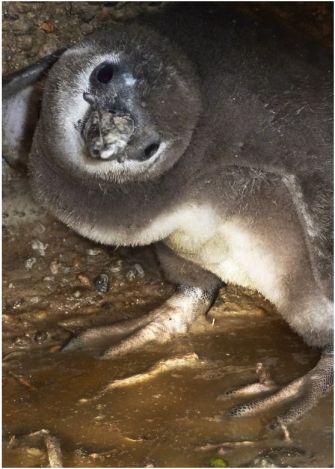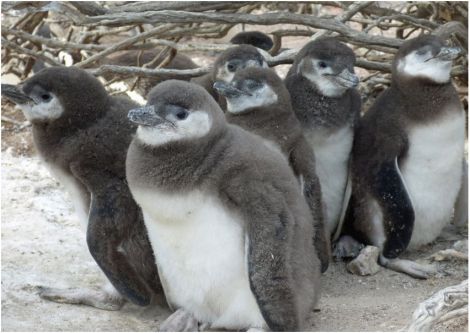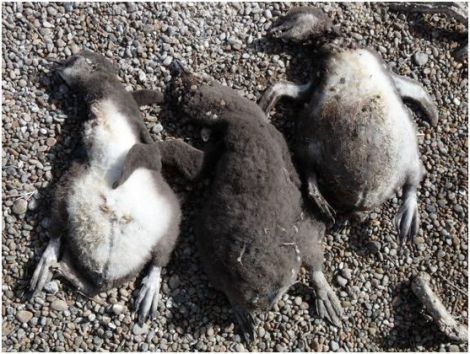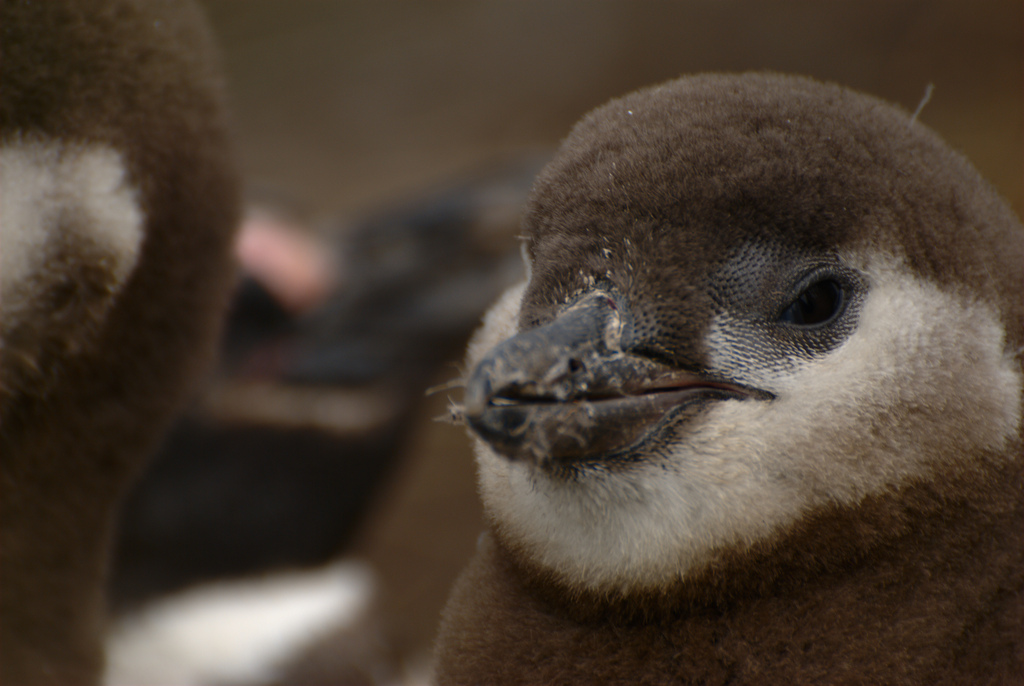Being a baby penguin is no easy ride. To survive, the chicks must escape starvation, the jaws of predators, and being beaten or pecked to death by other penguins. Now, on top of these dangers, there comes evidence the baby birds are facing another challenge to their existence: climate change, which is making their habitats increasingly deadly.
Scientists have known for a while that the warming atmosphere is changing the global food chain, and that these alterations can starve seabirds. But a team of researchers that has been monitoring penguins since the 1980s alleges that more extreme weather is directly responsible for killing these birds, mainly through abnormal heat and powerful rainstorms. These worsening environmental stresses can decimate as much as half of a penguin-chick population in a year, they say in a new study in PLOS ONE.

Dee Boersma / University of WashingtonA baby penguin huddles in a flooded burrow.
The scientists, led by University of Washington biology professor Dee Boersma, reached this dismal finding after studying the weather patterns and wildlife populations around Punta Tombo, home to some 400,000 Magellanic penguins on the Argentinian coast. They noted that the amount of rainfall and number of storms has increased in the past few decades during the penguins’ breeding season. That’s fine enough for the adult birds, which are protected by a thick layer of feathers. But the down-covered chicks don’t have such armor, and as a result they can die of hypothermia when caught in a torrential downpour.
Conversely, when the weather grows sweltering, the chicks fall into the danger of overheating. With their downy coatings, they can’t dive into the ocean to cool off like their waterproof parents; they simply sit in place and get hotter and hotter until some of them perish.

Dee Boersma / University of WashingtonPenguin chicks resting in the shade as their parents search for food.
Warped weather isn’t the No. 1 killer of young penguins, but it’s likely to sow more bird death in the coming years, according to the trends the researchers noticed. As the researchers explain:
During a span of 27 years, an average of 65 percent of chicks died per year, with some 40 percent starving. Climate change, a relatively new cause of chick death, killed an average of 7 percent of chicks per year, but there were years when it was the most common cause of death, killing 43 percent of all chicks one year and fully half in another. …
“We’re going to see years where almost no chicks survive if climate change makes storms bigger and more frequent during vulnerable times of the breeding season as climatologists predict,” [coauthor Ginger] Rebstock said.
It’s probably too late to stop the violent weather that’s coming down the pipeline, says Boersma. But there’s still much people can do to protect the Argentinian colony, said to be the world’s biggest breeding grounds for Magellanic penguins — like “creating a marine protected reserve, with regulations on fishing, where penguins forage while raising small chicks.”

Dee Boersma / University of WashingtonChicks that died of hypothermia after a rainstorm.
 This story first appeared on Atlantic Cities as part of the Climate Desk collaboration.
This story first appeared on Atlantic Cities as part of the Climate Desk collaboration.



